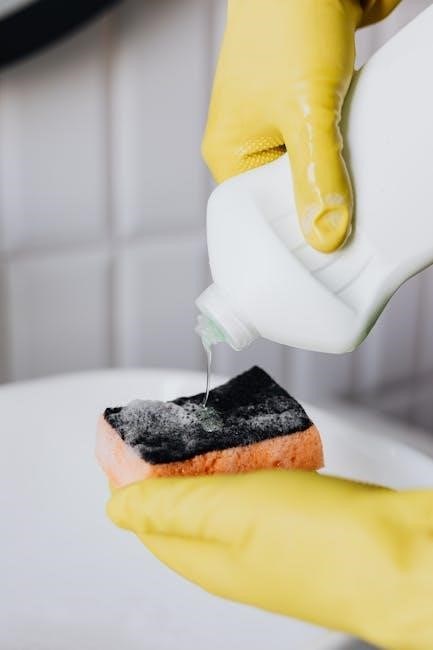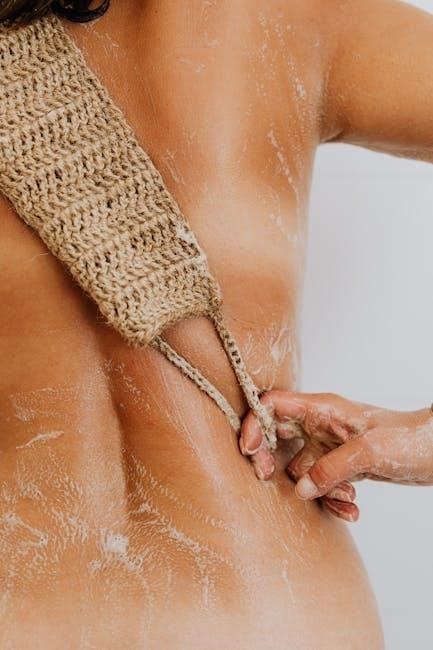DTF Washing Instructions: A Comprehensive Guide
Direct to Film (DTF) printing offers vibrant and durable designs on t-shirts. Maintaining these prints requires proper washing techniques. This comprehensive guide provides detailed instructions to ensure your DTF printed garments stay in excellent condition, preventing peeling, cracking, and fading. Follow these steps for long-lasting, vibrant designs.

Direct to Film (DTF) printing has revolutionized the garment customization industry, offering a versatile and high-quality method for creating vibrant and durable designs on various fabrics. Unlike traditional printing techniques, DTF allows for intricate details and full-color graphics to be transferred onto textiles with ease. The process involves printing designs onto a special film, applying a powdered adhesive, and then heat-pressing the design onto the fabric.
This innovative approach has gained immense popularity due to its ability to produce long-lasting prints that can withstand numerous washes. However, to ensure the longevity and vibrancy of DTF prints, it is crucial to follow proper washing and care instructions. Understanding the fundamentals of DTF printing is essential for maintaining the quality of your customized garments.
The benefits of DTF printing extend beyond its visual appeal. It offers excellent color reproduction, soft hand feel, and the ability to print on a wide range of materials, including cotton, polyester, and blends. The durability of DTF prints makes them ideal for everyday wear and various applications, from personalized apparel to promotional items. By adhering to the recommended washing guidelines, you can preserve the integrity of your DTF prints and enjoy their vibrant colors for years to come.
Why Proper Washing Instructions Matter for DTF Prints
Proper washing instructions are paramount for maintaining the quality and longevity of DTF prints. Unlike traditional printing methods, DTF involves a unique process that requires specific care to prevent damage and ensure the designs remain vibrant and intact. Ignoring these instructions can lead to premature fading, cracking, and peeling of the prints, ultimately reducing the lifespan of your customized garments.
The adhesive used in DTF printing is crucial for bonding the design to the fabric. However, this adhesive can be susceptible to damage from harsh chemicals, high temperatures, and abrasive washing cycles. Following proper washing guidelines helps protect the adhesive layer, ensuring the print remains securely attached to the fabric.
Moreover, the colors in DTF prints can fade or bleed if exposed to improper washing conditions. Using cold water and mild detergents helps preserve the vibrancy of the colors, keeping your designs looking fresh and new. Additionally, turning garments inside out before washing minimizes friction and abrasion, further protecting the print from damage.
By adhering to the recommended washing instructions, you not only extend the life of your DTF prints but also maintain the overall appearance and feel of the garment. Investing a little extra care in washing your DTF-printed items will ensure they continue to look their best for years to come.
Essential Preparations Before Washing
Before tossing your DTF-printed garments into the washing machine, a few essential preparations can significantly impact the longevity and appearance of your designs. These preliminary steps are crucial for protecting the print and ensuring it withstands the rigors of the washing process.
Firstly, always separate your DTF-printed items from other clothing, especially those with zippers, buttons, or rough textures. These can cause abrasion and damage to the print during the wash cycle. Sorting by color is also advisable to prevent any potential color bleeding, particularly for garments with vibrant or dark colors.
Secondly, check the care label on your garment for any specific washing instructions provided by the manufacturer. These instructions may offer additional guidance tailored to the fabric type and construction of the item. Following these recommendations can further enhance the effectiveness of your washing routine.
Thirdly, empty all pockets and ensure there are no loose items that could snag or damage the DTF print. Remove any detachable accessories, such as belts or pins, to prevent them from causing abrasion or entanglement during the wash cycle.
Finally, pre-treat any stains or heavily soiled areas before washing. Use a mild stain remover specifically designed for delicate fabrics, and avoid harsh chemicals that could damage the print. Gently dab the stain and allow the remover to sit for a few minutes before proceeding with the wash. These preparations are very important.
Waiting Period Before First Wash (24-48 Hours)
After receiving your freshly DTF-printed garment, exercising patience before the initial wash is paramount. Allowing a waiting period of at least 24 to 48 hours, and ideally even up to 72 hours, is crucial for ensuring the DTF print properly adheres to the fabric. This waiting time permits the adhesive used in the DTF printing process to fully cure and bond with the garment fibers.
During this period, avoid wearing the garment or exposing it to excessive moisture or heat. These conditions can interfere with the curing process and potentially compromise the integrity of the print. Store the garment in a cool, dry place, away from direct sunlight or extreme temperatures.
The adhesive requires time to fully penetrate the fabric and form a strong, lasting bond. Initiating the washing process too early can disrupt this bond, leading to premature peeling, cracking, or fading of the design. By allowing the recommended waiting period, you significantly increase the lifespan and vibrancy of your DTF print.
Consider this waiting period as an investment in the longevity of your customized garment. It’s a simple yet effective step that ensures your DTF print remains vibrant and intact through numerous washes. Patience during this initial phase translates into a longer-lasting, more visually appealing garment that you can enjoy for years to come. Make sure to wait.
Turning Garments Inside Out: A Crucial First Step
Before placing your DTF-printed garment into the washing machine, remember this essential step: turn it inside out. This simple action is critical to protect the integrity and vibrancy of your DTF print during the wash cycle. By turning the garment inside out, you create a protective barrier that shields the printed design from direct contact with other items in the wash and the harsh surfaces of the washing machine drum.
The primary reason for this precaution is to minimize abrasion and friction. During washing, garments rub against each other and the machine’s interior, which can cause the DTF print to fade, crack, or even peel over time. Turning the garment inside out reduces the direct impact of this friction on the printed area.
Additionally, detergents and cleaning agents can be abrasive to DTF prints. By turning the garment inside out, you limit the direct exposure of the print to these chemicals, helping to preserve its color and detail. This simple step can significantly extend the life of your DTF-printed design.
This practice also helps prevent lint from accumulating on the printed surface, which can dull its appearance. By turning the garment inside out, you ensure that any lint generated during the wash cycle is less likely to adhere to the print. Turning your clothes inside out maintains its quality.
Water Temperature: Cold or Warm?

When washing DTF-printed garments, the water temperature is a crucial factor that can significantly impact the longevity and quality of the print. The question of whether to use cold or warm water is a common one, and understanding the nuances of each option is essential for proper care.
Generally, it is recommended to use cold or warm water for washing DTF prints. Cold water is often the preferred choice, as it is gentler on the fabric and helps prevent the colors from fading or bleeding. Cold water also minimizes the risk of shrinkage, which is particularly important for delicate or fitted garments. Additionally, washing in cold water is more energy-efficient, making it an environmentally friendly choice.
Warm water can be used, but it is crucial to keep the temperature at a moderate level. Avoid hot water, as it can damage the DTF print and cause discoloration. Warm water is effective for removing dirt and stains, but it should be used with caution to prevent any adverse effects on the print.
Ultimately, the best approach is to check the care label on the garment for specific instructions. If no specific temperature is indicated, opting for cold water is a safe and effective way to wash your DTF-printed items.

Ideal Temperature Range (30-40°C / 86-104°F)
Maintaining the vibrancy and integrity of DTF prints requires careful attention to washing temperatures. The ideal temperature range for washing DTF-printed garments is between 30-40°C (86-104°F). This range strikes a balance between effectively cleaning the garment and preserving the quality of the DTF transfer.
Washing within this temperature range helps to keep the colors vibrant and prevents them from fading or bleeding. It also ensures that the fabric remains strong and does not shrink or warp. Using water that is too hot can cause the DTF print to crack, peel, or otherwise deteriorate, while water that is too cold may not effectively remove dirt and stains.
When setting your washing machine, make sure to select a temperature setting that falls within the recommended range. If your machine does not have specific temperature settings, you can use a thermometer to ensure that the water is within the ideal range. Additionally, it is important to use a mild detergent and avoid harsh chemicals, as these can also damage the DTF print. By following these guidelines, you can help to extend the life of your DTF-printed garments and keep them looking their best;
Why Avoid Hot Water

Hot water can be detrimental to DTF prints, primarily due to its impact on the adhesive and the ink. The high temperature can weaken the bond between the DTF transfer and the fabric, leading to premature peeling and cracking of the design. This is because the heat causes the adhesive to soften and lose its grip, especially during the agitation of the washing machine cycle.
Furthermore, hot water can cause the colors in the DTF print to fade or bleed. The ink used in DTF printing is designed to be durable, but excessive heat can break down the pigments, resulting in a less vibrant and less defined image. This is particularly noticeable with darker colors, which may leach onto lighter areas of the garment;
In addition to affecting the print itself, hot water can also damage the fabric of the garment. High temperatures can cause the fabric to shrink, warp, or become misshapen, which can further distort the DTF print and make it appear uneven or stretched. Therefore, avoiding hot water is crucial for maintaining the quality and longevity of DTF-printed apparel.
Choosing the Right Detergent
Selecting the appropriate detergent is crucial for maintaining the quality and longevity of DTF prints. The wrong detergent can cause fading, cracking, or peeling of the design, while the right one will help preserve the vibrancy and integrity of the print. When choosing a detergent for DTF-printed garments, opt for mild, liquid detergents. These are less likely to contain harsh chemicals that can damage the print.
Powder detergents may not dissolve completely, leaving residue that can irritate the skin or dull the colors of the print. Liquid detergents, on the other hand, dissolve easily and are more gentle on the fabric and the print. Look for detergents that are specifically formulated for delicate fabrics or for use in cold water, as these are typically less harsh than standard detergents.
Avoid detergents that contain bleach, enzymes, or optical brighteners, as these can damage the DTF print and cause it to fade or discolor. Fabric softeners should also be avoided, as they can leave a coating on the fabric that interferes with the adhesion of the DTF print, leading to peeling or cracking.

Mild, Liquid Detergents Recommended
When it comes to washing DTF-printed garments, the choice of detergent plays a pivotal role in preserving the print’s quality and longevity. Mild, liquid detergents are highly recommended due to their gentle nature and effectiveness in cleaning without causing damage. These detergents are formulated to be less harsh than their powdered or concentrated counterparts, reducing the risk of fading, cracking, or peeling of the DTF print.
Liquid detergents dissolve more readily in water, ensuring that no residue is left behind on the fabric; This is particularly important for DTF prints, as any remaining detergent particles can interfere with the print’s adhesion and cause it to deteriorate over time. Mild detergents, on the other hand, are designed to be gentle on fabrics and prints, effectively removing dirt and stains without compromising the integrity of the design.
When selecting a mild, liquid detergent, look for options that are free from harsh chemicals such as bleach, phosphates, and enzymes. These additives can be detrimental to DTF prints, causing discoloration, fading, or even complete removal of the design;
Detergents to Avoid: Harsh Chemicals and Fabric Softeners
To maintain the vibrancy and durability of your DTF prints, it’s crucial to steer clear of detergents containing harsh chemicals and fabric softeners. These additives can wreak havoc on the print’s integrity, leading to premature fading, cracking, and even complete disintegration of the design. Harsh chemicals, such as bleach and strong enzymes, are designed to aggressively remove stains and dirt, but they can also strip away the ink from DTF prints, causing them to lose their color and sharpness.
Fabric softeners, while intended to make clothes feel softer, can leave a coating on the fabric that interferes with the adhesion of the DTF print. This can cause the print to peel or flake off over time, especially after multiple washes. Furthermore, fabric softeners can reduce the breathability of the fabric, making it less comfortable to wear, especially in warm weather.
Therefore, it’s essential to carefully read the labels of your detergents and avoid those that contain harsh chemicals or fabric softeners. Opt for mild, liquid detergents specifically formulated for delicate fabrics and prints.
Washing Machine Settings: Gentle Cycle is Key
When washing DTF printed garments, selecting the correct washing machine settings is paramount to preserving the print’s quality and longevity. Among the various settings available, the gentle cycle is the most suitable option. This cycle is designed to be less abrasive than regular or heavy-duty cycles, minimizing the amount of stress and friction that the DTF print is subjected to during the wash.
The gentle cycle typically involves slower agitation speeds and shorter wash times, which helps to prevent the print from rubbing against other items in the load or the inside of the washing machine drum. This reduced friction minimizes the risk of the print cracking, peeling, or fading.
Furthermore, the gentle cycle often uses a lower water temperature, which is also beneficial for DTF prints. High water temperatures can cause the ink to soften and become more susceptible to damage. By using a lower water temperature, the gentle cycle helps to protect the print from heat-related degradation.
Recommended Washing Cycle Speed (600-800 rpm)
The spin cycle speed of your washing machine plays a crucial role in the longevity of your DTF prints. A high spin speed can put excessive stress on the printed design, potentially leading to cracking, peeling, or fading over time. Therefore, selecting an appropriate spin speed is essential for maintaining the quality of your DTF-printed garments.
For optimal care, it is recommended to use a washing cycle speed between 600 and 800 rpm (revolutions per minute). This range provides a balance between effectively removing water from the garment and minimizing the risk of damage to the DTF print. Speeds lower than 600 rpm may not extract enough water, leading to longer drying times and potential mildew growth, while speeds higher than 800 rpm can be too harsh on the print.
Using a washing machine with adjustable spin speeds allows you to have greater control over the washing process, ensuring that your DTF prints receive the care they need to last longer.
Hand Washing DTF T-Shirts: A Gentle Alternative
While machine washing with the right settings is acceptable, hand washing offers an even gentler approach to cleaning DTF-printed t-shirts, particularly for delicate or intricate designs. Hand washing minimizes the mechanical stress on the print, further reducing the risk of damage and ensuring long-term vibrancy.
To hand wash your DTF t-shirts, start by filling a clean basin or sink with cold water. Add a small amount of mild, liquid detergent, ensuring it’s fully dissolved before adding the garment. Submerge the t-shirt and gently agitate the water to loosen any dirt or grime. Avoid harsh scrubbing or twisting, as this can damage the print.
After washing, rinse the t-shirt thoroughly with cold water until all traces of detergent are removed. Gently squeeze out excess water, avoiding wringing. To dry, lay the t-shirt flat on a clean towel or hang it on a plastic hanger away from direct sunlight. Hand washing allows for greater control and ensures the utmost care for your DTF prints.

Drying Instructions for DTF Prints
Proper drying is just as crucial as washing when it comes to preserving the quality and longevity of your DTF prints. The high heat and tumbling action of a machine dryer can be detrimental, potentially causing the print to crack, peel, or fade. Therefore, air drying is the recommended method for DTF-printed garments.
To air dry your t-shirt, gently remove excess water after washing, avoiding wringing or twisting the fabric. Lay the t-shirt flat on a clean, dry towel, reshaping it to its original form. Alternatively, you can hang the t-shirt on a plastic hanger, ensuring it’s not stretched or distorted. Avoid using wooden hangers, as they can stain the fabric.
Choose a well-ventilated area away from direct sunlight to dry your DTF prints. Direct sunlight can cause the colors to fade over time. Allow the t-shirt to dry completely before wearing or storing it. This method protects the print, maintaining its vibrancy and preventing damage.

Avoiding the Dryer: Air Drying is Preferred

When it comes to maintaining the quality and extending the lifespan of your DTF printed garments, avoiding the use of a machine dryer is highly recommended. While dryers offer a quick and convenient way to dry clothes, the high heat and tumbling action can be detrimental to DTF prints, leading to premature wear and damage.
The intense heat inside a dryer can cause the adhesive bonding the print to the fabric to weaken, resulting in cracking, peeling, or even complete separation of the design. The tumbling action can also cause friction between the print and other items in the dryer, leading to abrasion and fading of the colors.
Air drying, on the other hand, is a gentle and effective alternative that minimizes these risks. By allowing your DTF printed garments to air dry, you’re preserving the integrity of the print and ensuring its long-lasting vibrancy.
Ironing DTF Prints: Precautions and Recommendations
While air drying is the preferred method for drying DTF printed garments, there may be occasions when ironing becomes necessary to remove wrinkles or creases. However, it’s crucial to exercise extreme caution when ironing DTF prints to avoid damaging the design.
Direct contact between a hot iron and the print can cause it to melt, distort, or even adhere to the iron itself, resulting in irreversible damage. To prevent this, always iron DTF printed garments inside out. This creates a protective barrier between the iron and the print, minimizing the risk of direct heat exposure.
Furthermore, it’s essential to use a low heat setting when ironing DTF prints. High heat can still damage the print, even when ironing inside out. A low heat setting will provide enough warmth to remove wrinkles without posing a significant threat to the design. It is also advisable to use a pressing cloth between the iron and the garment to provide an extra layer of protection.
Long-Term Care Tips for DTF Printed Garments
To ensure the longevity and vibrancy of your DTF printed garments, consistent care is paramount. Proper washing and drying techniques, as outlined in previous sections, form the foundation of long-term care. However, there are additional steps you can take to further protect your printed apparel.
Firstly, consider storing your DTF printed garments properly when not in use. Avoid folding them in a way that creases the print, as this can lead to cracking over time. Instead, hang them in a closet or fold them loosely, ensuring the print is not under pressure.
Secondly, be mindful of potential sources of abrasion that can damage the print. Avoid wearing the garment in situations where it might rub against rough surfaces, such as backpacks or seatbelts. Also, be careful when handling the garment, avoiding excessive stretching or pulling of the printed area. When removing stains, avoid harsh chemicals, as these can damage the print.






